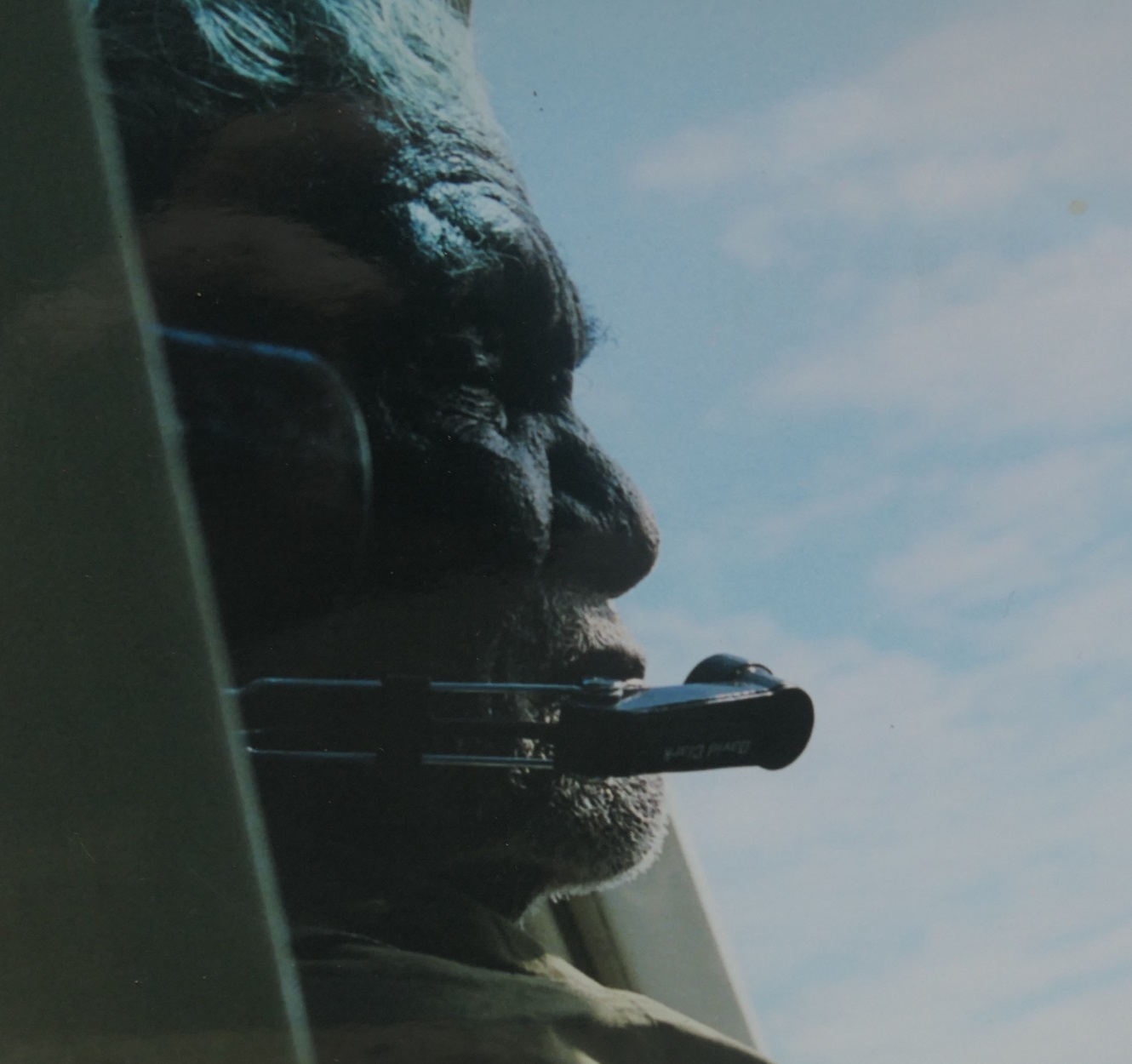The great and beautiful Paddy Nyunkuny Bedford has been 18 years dead, and the last of his estate gouaches, providentially locked away to benefit “generations of his peoples to come” by Jirrawun mentor Tony Oliver, are coming on to the market in Melbourne. D’Lan Davidson has taken over the mantle of the late Willie Mora, who knew Bedford so well, in managing the estate.
One senses the beginning of history in the elegant catalogue that D’Lan Contemporary has produced for this show. For only the eternal Frances Kofod writes from her first hand experience of the Old Man. Fortunately, I shared a tiny part of that experience as the Gija linguist and cultural consultant and I were piloted around Bedford’s sacred sites in a helicopter that he’d hired for one last first hand connection. She was recording his memories at each landing place – Old Bedford Downs where his mother had had a relationship with the white manager, Paddy’s own Emu Dreaming site on Mount King and the stark, treeless Bedford Downs massacre site below it, etc.
I was but an arm for Paddy to lean on as he burst from the helicopter each time, eager to pour out his stories for Kofod’s tape recorder. I wonder what’s happened to them?
The reason I’m suggesting that we’re moving on from that past is the minor inconsistencies that emerge from excellent writers’ theories in the catalogue about how and why the gouaches came about. For, while the artist’s painting and gouaches both came miraculously into being in 1998 – when he must have been approaching 80 – there was then a concentration on canvas works as Bedford, his brother-in-law Timmy Timms and Timms’s sister, Peggy Patrick sought to achieve the truth-telling makarrata that’s being talked about today in light of the Uluru Statement. For, as I wrote in the Mora Gallery catalogue for Paddy’s Heart of Blackness exhibition, there’d been 32 attested massacres or police shootings in the East Kimberley lands of the Gija, and this trio of elders wanted them recognised.
Their paintings and Oliver’s trenchant explanations appeared in exhibitions in Melbourne – Blood on the Spinifex, and in Sydney – True Stories. The trio then ‘remembered’ the story and the songs by the spirits of the dead of the Bedford Downs massacre, turning them defiantly into the performance Fire, Fire Burning Bright seen at Perth and Melbourne Festivals. With the enthusiastic patronage of Governor General Sir William Deane, the denying Windschuttles of the world were put to flight.
By 2003 Paddy Bedford could sit back and reflect a little more. Gouaches were a lot easier for the Old Man to manage now. But were they studies for future canvases, “meditations on the corporeal memory of forms previously established on canvas”, or were they “improvisations on paper” as gallerist Dallas Gold declared when he held a show called Jirrawun Jazz, making reference to Miles Davies, Coltrane and Monk – not to mention Matisse’s late Jazz cut-outs – and identifying “improvisations on Paddy Bedford’s symbols associated with Knowledge and Law”?
Or were they simple abstractions? All are suggestions in the catalogue.
One concrete example pictured by writer Georges Petitjean shows a 2003 gouaches and a 2004 painting with such a similar design that it seems improbable that he could deny the one being a study for the other. But Petitjean is so keen to make a Mondrian connection – and indeed, Paddy shown a work by the Dutch artist did reportedly say, “He should come with me in the bush” – that he may have been blinkered to my simplistic reading that the painting must be a Gija resolution of his experimental gouache.
But that’s a view confirmed by a quote from Tony Oliver himself: “His gouaches were instinctual studies that inspired his last period of great paintings”. Thanks to D’Lan Contemporary’s head of research, Vanessa Merlino for including the voice of the man who loved and undoubtedly inspired Bedford.
Petitjean is, however, valuable in noting Bedford’s serial approach to gouache-making; in a calligraphic tendency that emerged in his last series of white-on-black boards; and in clarifying that the gouaches clearly lack the dotted delineation of spaces that is such a feature of East Kimberley painting, even before Rover Thomas and Paddy Jaminji made it ubiquitous.
They are, as was noted as far back as 2003 when the Grant Pirrie gallery showed this new period of Paddy’s gouaches, not unrelated to Paul Klee’s assertion that “a line is a dot that went for a walk”.
The elegant, 100-page hard-back catalogue will be launched in Melbourne on Tuesday 17th August at D’Lan Contemporary and in Sydney at the Sydney Contemporary artfair on Saturday 7th September. And the gouaches are on show in Melbourne from 16the August until 20th September – also at Frieze Masters in London in early October.
© courtesy of the estate of Paddy Bedford




